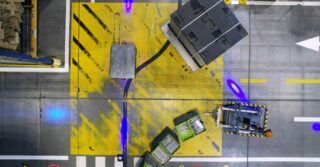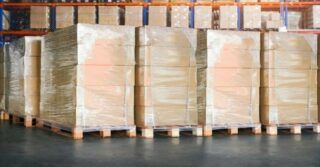Industrial robots, particularly heavy 6-axis robots, have been used in manufacturing plants around the world for decades. They are responsible for numerous production processes such as transfer, palletising, spot welding, arc welding, gluing, etc. The preparation of a robotic production process involves several steps. However, when it comes to programming the robot paths, there are two methods: offline and online.
Offline programming is carried out using dedicated CAD/CAM software, complex tools provided by leading software and tool manufacturers for the industry. Although this software allows the simulation of the entire production process, despite the accuracy of the models and the relatively good representation of the actual process, in most cases we are still destined to program the robots on site, on the finished line. There are several reasons for this.
Time and accuracy are critical
The main factor responsible for the inaccuracy in reproducing the finished line compared to the simulation model is time. Unrealistic deadlines for various design stages (or poor planning) and the execution of the production line can lead to their undesirable intertwining. This affects the accuracy of modelling individual elements that do not have a 1:1 representation in the real world. It’s easy to imagine that a tightly programmed robot trajectory could collide with an unmodeled element of the equipment in real conditions.
Continually inaccurate modelling methods
Despite the continuous development of the software and modelling algorithms mentioned above, we still encounter situations where we are helpless. One example is the behaviour of a robot’s cable harness or other moving elements with loose bundles of cables or wires. The randomness of their behaviour necessitates manual verification of the robot’s movements to avoid damaging them during line start-up.
These challenges highlight the need for online programming and tuning, and underline the fact that while off-line programming can significantly streamline the set-up process, final on-site tuning is critical to ensure that the robots operate correctly in the actual production environment.
Online programming is about more than just moving the robot
It’s a mistake to think that the on-site commissioning team’s only job is to upload simulated programs into the robot. An online programmer’s tasks also include all robot commissioning, initial axis calibration, tool configuration and balancing, application commissioning, etc. This also includes adapting the programs to comply with applicable standards, especially in industries such as automotive, where specific standards are mandatory. An important aspect that often differs from simulation assumptions and results is cycle time. Its optimisation is also within the online programmer’s remit and is carried out on site, observing the line in operation.
Are we condemned to online programming and adjustments?
It’s not easy to answer this question. The examples given show the complexity involved in preparing an entire robotic production process. However, the development of CAD/CAM software and improved metrology suggests that it may be possible to move away from online programming within a few years.
Increasingly, companies responsible for designing and executing production lines are adopting a modular approach. Individual segments are designed and executed at their facilities, then disassembled and reassembled at the customer’s site. This approach minimises the online phase, as the entire design team and programmers are on-site, and allows for offline adjustments. While this method can deliver a finished product and resolve any issues before going live on site, it doesn’t guarantee that the line assembled at the customer’s site will be a perfect dimensional match to what the company had in its factory, mainly due to assembly methods that don’t allow everything to be rebuilt with the desired accuracy.
Today, we can address this challenge as well. Advanced scanning and measuring methods allow secondary measurements, i.e. the line is precisely measured again after assembly and the results are compared with the component placement in the simulation. The simulation is then adjusted to the realities of the completed line, and the robot programs are corrected and transferred to the robot without the need for manual checking. Such an approach has eliminated the need for online path programming in spray applications where accuracy is paramount. Online programming is also not used in many industries where robots perform high-precision tasks, such as electronic component assembly. However, in applications where accuracy is more critical than execution time, and where the entire process can be meticulously prepared, the focus is on path programming and robots of varying degrees of accuracy. The challenge remains in complex production lines with many large 6-axis robots.
The melody of the distant future, when it comes to the most popular and mass applications of robots, will be vision systems combined with AI algorithms that allow the robot to constantly learn the tasks it is performing or to correct its trajectory to achieve the best cycle time.
Today, we already have technologies and tools that allow us to move away from online programming. However, correlating all the components of this process is still a problem. Once these difficulties are overcome, online robot programming will be a thing of the past.


![Will we always program industrial robots online? [Analysis] Will we always program industrial robots online? [Analysis]](https://industryinsider.eu/wp-content/uploads/xprogramowanie-robotow-980x512.jpg.pagespeed.ic.BrXzPoEjmK.jpg)
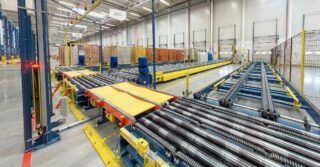
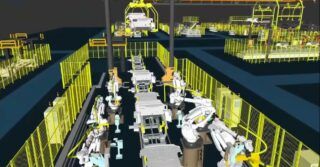
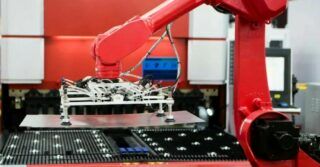
![Forecasts, Opportunities, and Challenges for the Polish Industry in 2024 [ANALYSIS] Forecasts, Opportunities, and Challenges for the Polish Industry in 2024 [ANALYSIS]](https://industryinsider.eu/wp-content/uploads/xIndustry-40-320x167.jpg.pagespeed.ic.o8zijDQlIJ.jpg)
